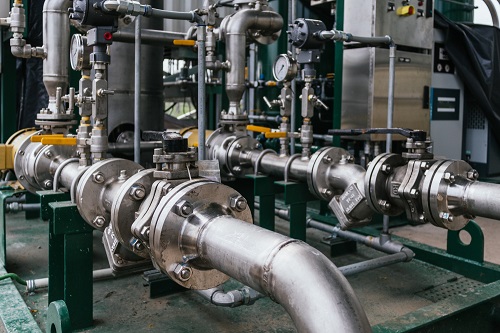ASME Standard Flanges

ASME Standard Flanges
Flanges are integral components in piping systems, providing a robust method for connecting pipes, valves, pumps, and other equipment.

The American Society of Mechanical Engineers (ASME) has established comprehensive standards for flanges, ensuring their reliability and compatibility across various industries. These standards, outlined primarily in ASME B16.5 and ASME B16.47, are critical for maintaining safety, performance, and interoperability in piping systems.
Key ASME Flange Standards
ASME B16.5
- Scope: This standard covers pipe flanges and flanged fittings for sizes ranging from NPS ½ (DN 15) to NPS 24 (DN 600).
- Size up to 24 inches
- Pressure Ratings: These include pressure-temperature ratings, materials, dimensions, tolerances, marking, testing, and methods of designating openings for flanges.
- Classes: ASME B16.5 flanges are classified into seven pressure classes: 150, 300, 400, 600, 900, 1500, and 2500. These classes indicate the maximum pressure the flange can withstand.
ASME B16.47
- Scope: This standard extends to large-diameter steel flanges, covering sizes NPS 26 (DN 650) to NPS 60 (DN 1500).
- Series: It is divided into two series each with specific dimensions and pressure ratings.
- Series A (formerly MSS SP-44)
- Series B (formerly API 605)
- Pressure Classes: Similar to B16.5, B16.47 flanges are available in pressure classes 75, 150, 300, 400, 600, and 900.
Material Specifications ASME Standard Flanges
ASME standards specify a wide range of materials suitable for flange construction, ensuring compatibility with various applications, including:
- Carbon Steel: Commonly used due to its strength and affordability. Grades include ASTM A105 and A350 LF2.
- Stainless Steel: Preferred for its corrosion resistance and durability. Grades like ASTM A182 F304/F304L and F316/F316L are widely used.
- Alloy Steel: Utilized for high-temperature and high-pressure applications. Examples include ASTM A182 F11 and F22.
Dimensions and Tolerances
ASME Standard Flanges provide precise dimensions for:
- Flange Diameter: Outer diameter, bolt circle diameter, and hub diameter.
- Bolt Holes: Number, size, and spacing of bolt holes.
- Thickness: Minimum thickness to ensure structural integrity under pressure.
- Facing: Types of facing, including raised face (RF), flat face (FF), and ring-type joint (RTJ), which affect the sealing surface and gasket compatibility.
Testing and Quality Assurance
To ensure reliability, ASME standards mandate rigorous testing, including:
- Hydrostatic Testing: Verifies the flange’s ability to withstand pressure without leakage.
- Non-Destructive Testing (NDT): Techniques such as ultrasonic, radiographic, and magnetic particle inspection to detect internal and surface defects.
- Material Certification: Manufacturers must provide material test reports (MTRs) certifying the chemical and mechanical properties of the flange material.
Examples and Applications
ASME Standard Flanges are ubiquitous in industries such as:
- Oil and Gas: High-pressure flanges are crucial for pipelines and refineries.
- Chemical Processing: Corrosion-resistant stainless steel flanges are used in harsh chemical environments.
- Power Generation: Alloy steel flanges are vital for high-temperature steam and water lines.
ASME flange standards are essential for ensuring the safety, reliability, and efficiency of piping systems across various industries. By adhering to these standards, engineers and manufacturers can guarantee the compatibility and performance of flanges under diverse operating conditions.
